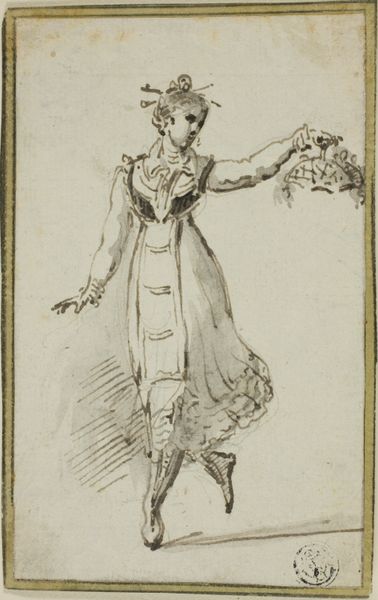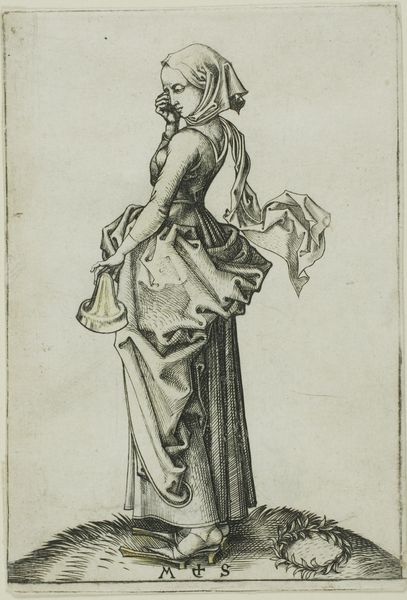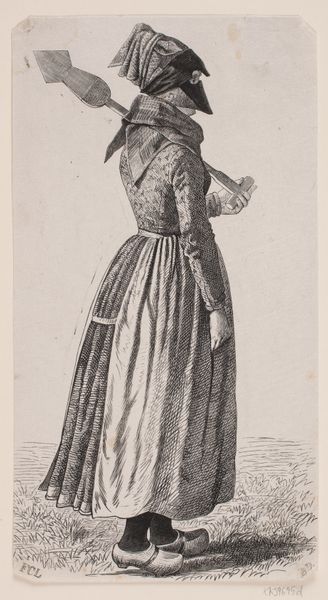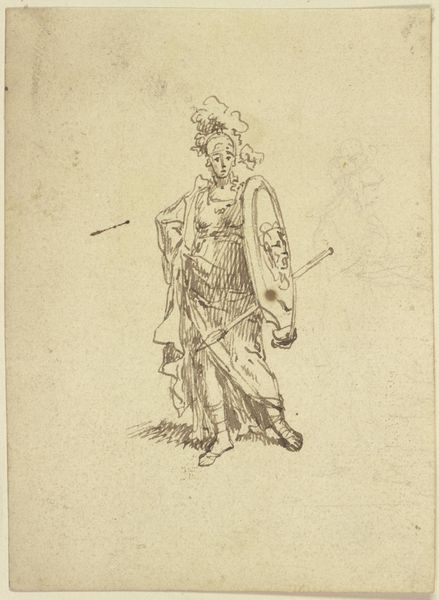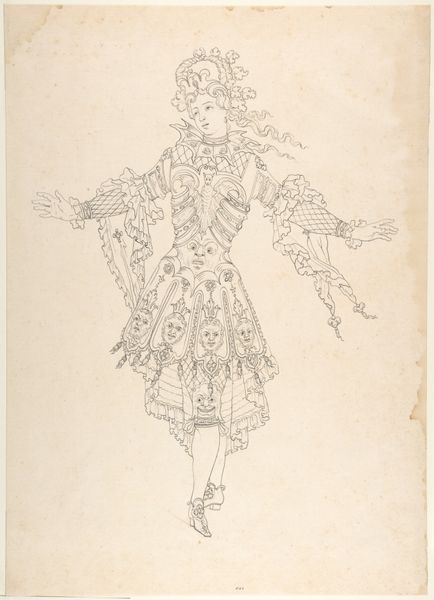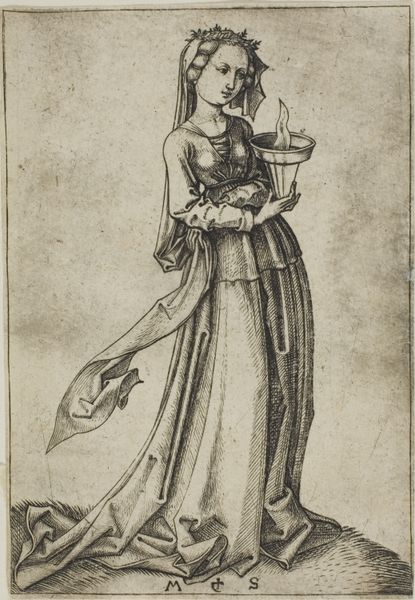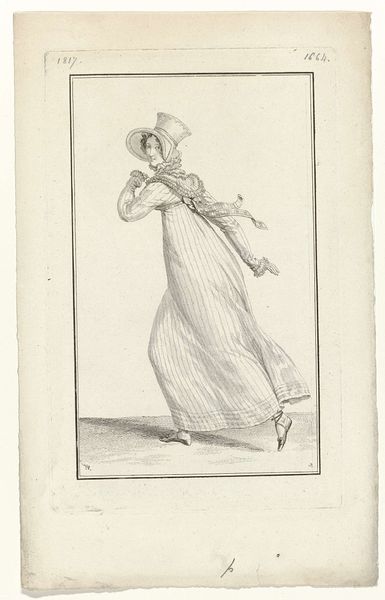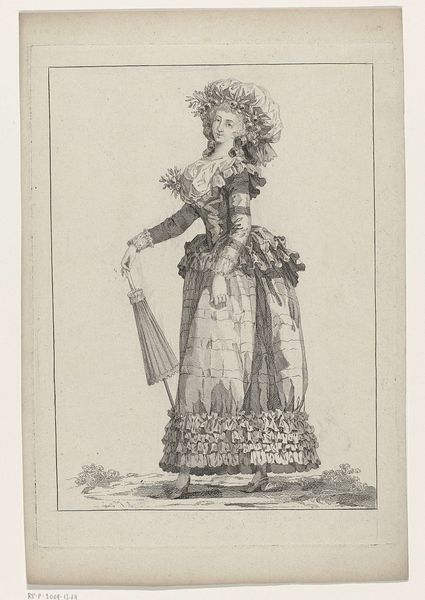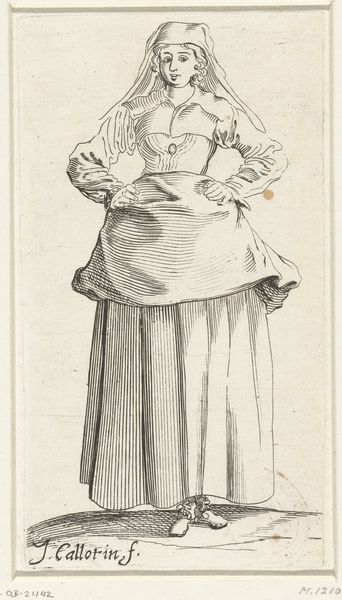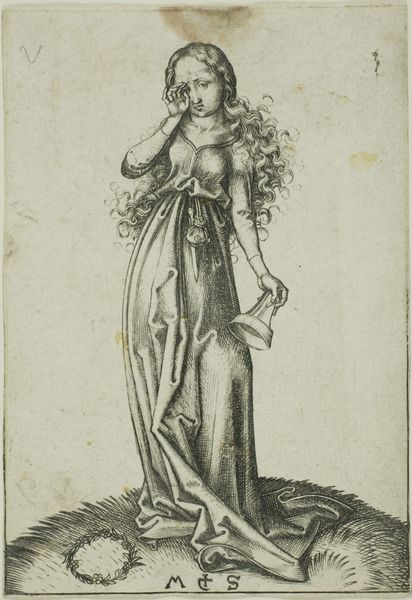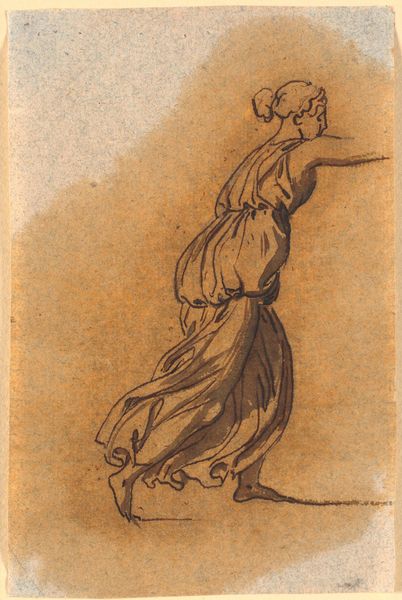
Frigga, gående, med et par høge på de udstrakte arme. Samt nogle linjer med kunstnerens notater 1743 - 1809
0:00
0:00
Dimensions: 169 mm (height) x 107 mm (width) (bladmaal)
Curator: This ink drawing, titled "Frigga, g\u00e5ende, med et par h\u00f8ge p\u00e5 de udstrakte arme. Samt nogle linjer med kunstnerens notater," presents the Norse goddess Frigga, depicted by Nicolai Abildgaard, a key figure of the Danish Golden Age. Abildgaard completed it sometime between 1743 and 1809. Editor: It strikes me as a very deliberate and perhaps a somewhat archaic figure. Her pose is static, almost regal. I’m immediately drawn to the stylized clothing. It feels staged, consciously posed, even a bit stiff. Curator: That "stiffness" you observe ties directly into the neoclassicist aesthetics that dominated the late 18th century. Abildgaard was instrumental in bringing these aesthetics to Denmark, drawing on Greek and Roman ideals in art and philosophy, especially as applied to his renderings of Norse mythology. Frigga, here, isn't just a goddess, but an emblem of virtue, wisdom, and foresight. Editor: The inclusion of what appears to be alchemical symbols across the dress does a lot to ground those intellectual and historical associations within more occult contexts. Were those notations part of his approach to Romanticism? Curator: Indeed, and these symbols mark Abildgaard’s personal flair to romanticism. As neoclassicism waned, a parallel shift toward romanticism started in the 19th century. Editor: So we have Frigga holding hawks in either outstretched arm with text along the bottom edge. How should we read these elements? Curator: We see not just Frigga, but a kind of commentary or study – which Abildgaard clearly saw fit to unite within one picture. Frigga is, after all, goddess of prophecy. In this way, it invites us to ponder our place and fates, so relevant during times of both enlightenment and revolutionary fervor. Editor: It certainly makes the work resonate differently to consider its historic value in terms of how to reconsider that time. Overall, I appreciate the level of study that it seems to depict between classical ideals and romantic mysticism.
Comments
No comments
Be the first to comment and join the conversation on the ultimate creative platform.
